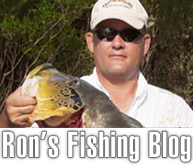 [Editor: this article first appeared on www.ronsfishingblog and may only be used by permission of Ron Speed]
[Editor: this article first appeared on www.ronsfishingblog and may only be used by permission of Ron Speed]
THIS WEEK’S REPORT
This week’s report is from El Salto: Lake level is low which is concentrating the bass, making them easier to locate. Most boats averaging 70 to 100 bass per day. Top bass was 11lb caught by Kirk Olsen from Nebraska on a watermelon zoom lizard in 6 feet of water fishing with guide Armondo Jr.
PAST MISTAKES WITH FISHING LIMITS ON BASS
 When I was a very young boy the limit of black bass was 15 bass per day per person here in Texas. At one time we even had a closed season on bass. In those days it was very unusual to go to a lake or pond and fish from the bank and not catch your limit of 15 bass.
When I was a very young boy the limit of black bass was 15 bass per day per person here in Texas. At one time we even had a closed season on bass. In those days it was very unusual to go to a lake or pond and fish from the bank and not catch your limit of 15 bass.
There were not that many people bass fishing and of course most fishermen did not have a boat. Those were the great days for us bass fishermen. Lots of fish, not many fishermen and very few boats. This all began to change in the 1960s, especially with the opening of Toledo Bend and Sam Rayburn lakes.
 These lake were fantastic and the limit was still 15 bass per day. I was guiding on Toledo Bend out of Six Mile Marina and I and two clients would easily catch 15 bass in the morning, come to the dock, filet the bass with a wood handle Rapala filet knife, and go back out and catch another limit. That’s 45 bass in the morning and 45 bass in the afternoon or 90 bass per day. Our crazy reasoning was that the lake was so big we could never catch enough bass to hurt the lake. WRONG!!!!
These lake were fantastic and the limit was still 15 bass per day. I was guiding on Toledo Bend out of Six Mile Marina and I and two clients would easily catch 15 bass in the morning, come to the dock, filet the bass with a wood handle Rapala filet knife, and go back out and catch another limit. That’s 45 bass in the morning and 45 bass in the afternoon or 90 bass per day. Our crazy reasoning was that the lake was so big we could never catch enough bass to hurt the lake. WRONG!!!!
When I began to take groups to Mexico in 1970 we continued to catch tons of bass and filet them so our clients could take lots of filets home to freezer burn in the deep freeze. When I moved my operation from Lake Dominguez to Lake Guerrero in 1973 we continued to kill thousands of bass and send filets home with the clients. We had no idea that we were killing a great lake and putting ourselves out of business in the long term. We continued that practice until the early 1980s.
Finally, after so many years of stupidity, we learned that we were ruining and destroying our favorite hobby. We began a policy of catch and release just in time to save our business and save the sport of bass fishing. Today, we know so much more than back in the early days. We have done a pretty good job with our guides in helping to protect the bass, at least in Lake El Salto. Thank goodness we saved our most beloved hobby just in time.
HAVE FUN WITH YOUR FISHING & WEAR THAT LIFEJACKET!!!!!!


